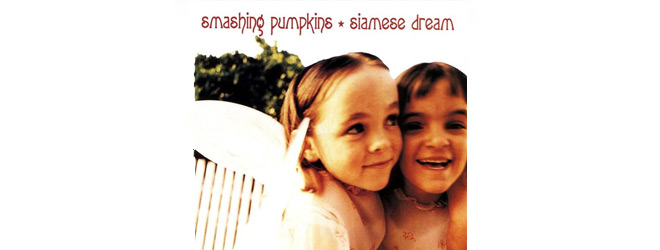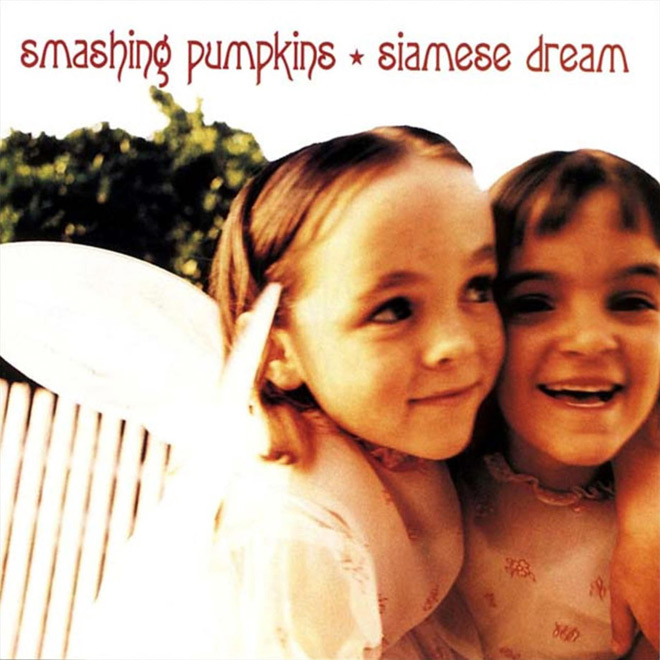In 1988, The Smashing Pumpkins began a journey into music that would lead them to be known as icons of the Alternative Rock genre. The band, which at the time consisted of Billy Corgan (lead vocals), James Iha (rhythm guitar, backing vocals), D’arcy Wretzky (bass guitar), and Jimmy Chamberlin (drums), broke out onto the scene with the release of their debut album Gish in 1991.
While Gish introduced the world to The Smashing Pumpkins, it was on the band’s sophomore release, Siamese Dream, that they found their foothold in the music industry and began carving their path and leading the way for many other artists to follow. Siamese Dream was released on Tuesday, July 27, 1993, and was considered innovative and a trailblazer in its time. As the band’s first major label debut, the band was then to receive their first Grammy nomination for Best Alternative Music Album in 1994. Now, as the album approaches its 25th anniversary, it is fascinating to take a look back at the album that gave The Smashing Pumpkins four singles, with two becoming massive hits, and gave pop culture so much more.
Upon its release, Siamese Dream debuted at number ten on the Billboard charts and went on to sell over four million copies in the US and six million globally. The album saw the band introducing more ethereal and layered sounds into their music, creating a blend of Progressive Rock and Dream Pop. The whimsical and heady atmosphere of many of the songs are delightful by-products and balance to the deep, and at times intense, lyrics written by Frontman Billy Corgan after working through some mental health issues at the time. After beginning to address his own mental obstacles and seeking professional help, Corgan’s writing intensified. One such by-product of this new lease on writing is the smash hit “Today” which was released on September 30, 1993, as the second single off the album.
In addition to “Today,” other singles this album also produced were “Disarm,” “Rocket,” and the enduring “Cherub Rock.” Released as the first single off the album, “Cherub Rock” is an anthemic journey down the rabbit hole with atmospheric tones and a distorted guitar fuzz that makes it that much more infectious. Although “Today” ended up seeing more commercial success, “Cherub Rock” remains a fan-favorite and even received a Grammy nomination the year of its release for “Best Hard Rock Performance with Vocal.” The third single off the album,“Disarm,” features a softer side to the composition and orchestration skills of The Smashing Pumpkins. This song is unlike many of its companions on the album because it is acoustic and more scenic with a classical music feel bolstered by the presence and prominence of violins on the track.
One of the more underrated tracks on the album is the speedy and delirious “Geek U.S.A.” With its fast-paced percussion and electrifying chord progression that rolls and evolves into an almost skater punk feel, this song has the makings of a fun crowd participation piece that keeps you guessing with every flip and change it makes. It is these kinds of artistic decisions that made the listening experience of Siamese Dream so unique in its time and make it an interesting and expansive place to revisit.
Despite what the group would go on to endure, between drugs battles, in-fighting, and member rotation, The Smashing Pumpkins managed to gain a solid foothold in the industry and mark their territory with Siamese Dream. The success of the album served a notice to their label and fans that they were not afraid to dig deep and get weird, and despite all reservations, it would pay off. The Smashing Pumpkins would go on to have one of the most successful Alternative Rock careers of the 1990s and the hallmarks have proven to survive the test of time.
Siamese Dream is often heralded as one the best album of the ’90s, with Rolling Stone magazine listing it at 362 on their “500 Greatest Albums of All Time.” While there has been much expansion on the tricks and techniques The Smashing Pumpkins engineered back then, revisiting these experimental and ethereal Arena Rock origins is like tripping the light fantastic for those of us old enough to remember their advent and a heady history lesson for those that came afterward.






No comment